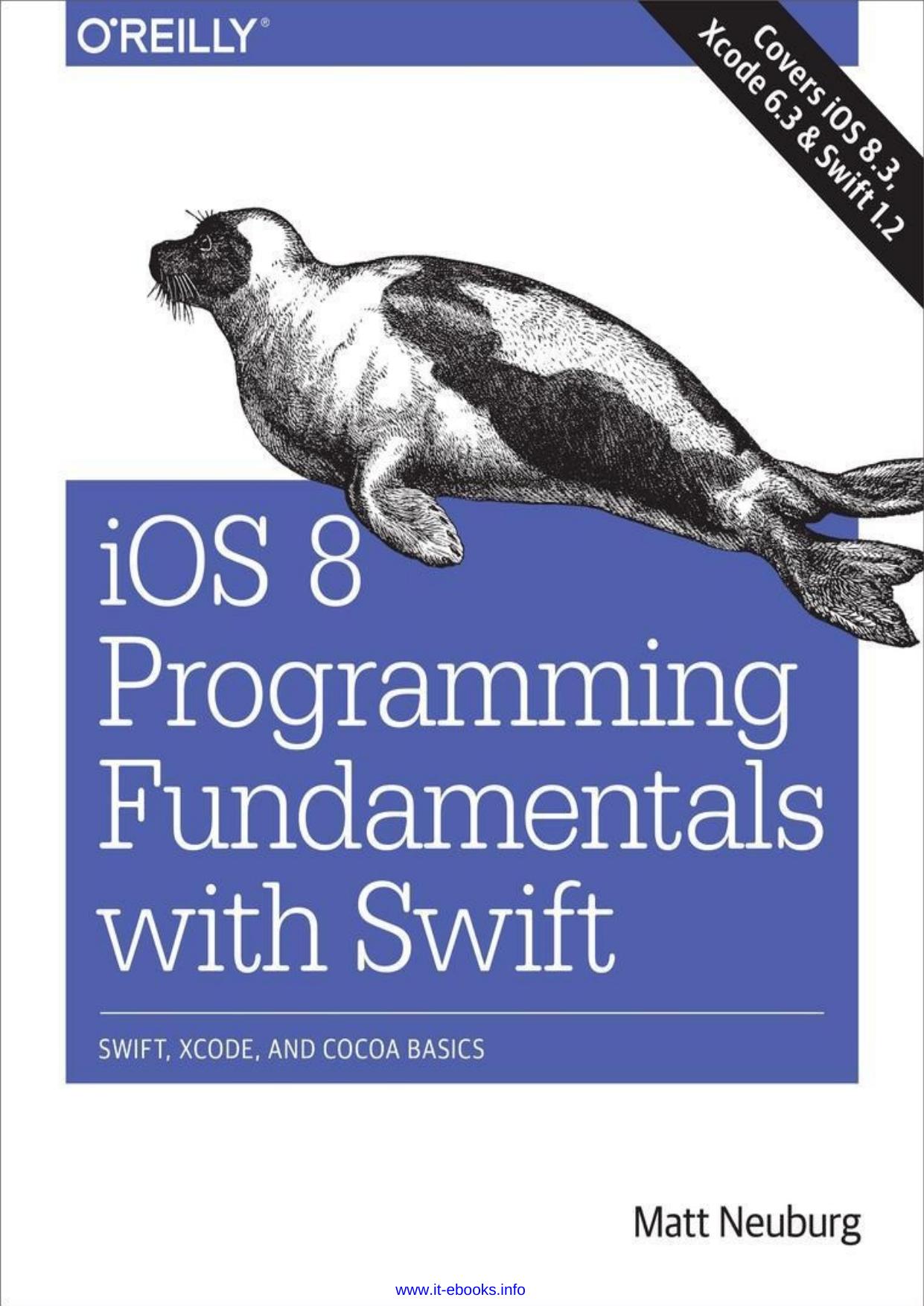iOS 8 Programming Fundamentals with Swift: Swift, Xcode, and Cocoa Basics by Matt Neuburg

Author:Matt Neuburg [Neuburg, Matt]
Language: eng
Format: epub, azw3, pdf
ISBN: 9781491908907
Publisher: O'Reilly Media
Published: 2015-03-12T22:00:00+00:00
Our app, however, is a Swift program. It has no main function! Instead, Swift has a special attribute: @UIApplicationMain. If you look in the AppDelegate.swift file, you can see it, attached to the declaration of the AppDelegate class:
@UIApplicationMain class AppDelegate: UIResponder, UIApplicationDelegate {
This attribute essentially does everything that the Objective-C main.m file was doing: it creates an entry point that calls UIApplicationMain to get the app started.
Under certain circumstances, you might like to remove the @UIApplicationMain attribute and substitute a main file. You are free to do this. Your file can be an Objective-C file or a Swift file. Let’s say it’s to be a Swift file. You would create a main.swift file and make sure it is added to the app target. The name is crucial, because a file called main.swift gets a special dispensation: it is allowed to put executable code at the top level of the file. The file should contain essentially the Swift equivalent of the Objective-C call to UIApplicationMain, like this:
import UIKit UIApplicationMain( Process.argc, Process.unsafeArgv, nil, NSStringFromClass(AppDelegate))
Why might you do that sort of thing? Presumably, it would be because you want to do other things in the main.swift file, or because you want to customize the call to UIApplicationMain.
Download
iOS 8 Programming Fundamentals with Swift: Swift, Xcode, and Cocoa Basics by Matt Neuburg.azw3
iOS 8 Programming Fundamentals with Swift: Swift, Xcode, and Cocoa Basics by Matt Neuburg.pdf
This site does not store any files on its server. We only index and link to content provided by other sites. Please contact the content providers to delete copyright contents if any and email us, we'll remove relevant links or contents immediately.
Secrets of the JavaScript Ninja by John Resig Bear Bibeault(6739)
Secrets of the JavaScript Ninja by John Resig & Bear Bibeault(6669)
Kotlin in Action by Dmitry Jemerov(5367)
Odoo 15 Development Essentials - Fifth Edition by Daniel Reis & Greg Mader(3770)
Odoo 15 Development Essentials by Daniel Reis(2883)
React Native - Building Mobile Apps with JavaScript by Novick Vladimir(2585)
Pride and Prejudice by Jane Austen(2425)
Learning Angular - Second Edition by Christoffer Noring(2420)
Computers For Seniors For Dummies by Nancy C. Muir(2094)
Mobile Forensics Cookbook by Igor Mikhaylov(2077)
Bulletproof Android: Practical Advice for Building Secure Apps (Developer's Library) by Godfrey Nolan(1949)
Android Development with Kotlin by Marcin Moskala & Igor Wojda(1871)
Building Android UIs with Custom Views by Raimon Ràfols Montané(1847)
1936941139 (N) by Bob Rosenthal(1820)
Building Progressive Web Apps: Bringing the Power of Native to the Browser by Ater Tal(1816)
Hands-On Internet of Things with MQTT by Tim Pulver(1813)
Android App Development by Franceschi Hervé J.;(1809)
Ember.js in Action by Joachim Haagen Skeie(1781)
Hands-On Design Patterns with React Native by Mateusz Grzesiukiewicz(1713)
